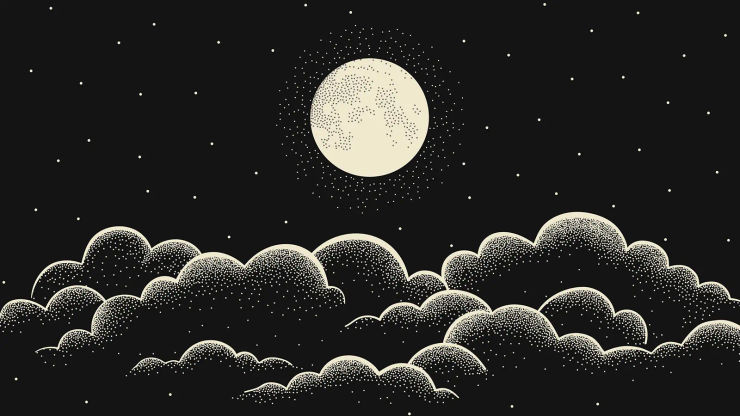Already counting down to the return of British Summer Time? Here’s how to embrace the darkness of winter
Winter psychology expert Dr. Kari Leibowitz on how, whilst we can't alter the dark nights and grey days, we can change how we feel about them.

Turning the clocks back in autumn can come with a real feeling of resignation: here comes the cold, and the dark; the end of summer joy. In this extract from her book, How to Winter: Harnessing Your Mindset to Thrive in Cold, Dark, or Difficult Times, Kari Leibowitz, PhD – an expert in leveraging mindset to improve health and well-being – encourages us to see things another way, and transform darkness from oppressive gloom to cosy wonder.
Darkness is one of the winter’s biggest challenges. Especially in places with milder winters, where there’s no snow to reflect light and brighten the landscape, short days and relentless clouds can make the season feel interminable. Yet darkness is also winter’s most reliable feature. The cold can be capricious and the snow elusive, and, as climate change heats the planet, both cold and snow are becoming rarer. But even places with relatively warm winters – San Diego, Florida, Spain, and Sydney – are still significantly darker in winter than summer. We can always count on the winter solstice to be the darkest day of the year.
The long nights of winter are a source of many complaints: about the difficulty of getting up in the morning, of leaving work under the night sky, or of how dreary it feels to go weeks without seeing the sun. Early evening darkness can feel like an impediment to socializing, exercising, or pursuing weeknight leisure. Yet the subtle and delicious joys of darkness beckon to those willing to see it another way. The darkness invites intimacy and coziness, enabling candlelit dinners. It invites rest, allowing for early bedtimes and late mornings. It invites us to gather round, becoming a backdrop for pulling each other close and telling stories.
‘Rather than pushing against it, ask yourself: What is better in the dark? All sorts of pastimes – from family-friendly to family-making – benefit from the cover of darkness.’
The darkness also invites rituals: from the small act of walking through the house and turning on lamps to Hanukkah, Diwali, St. Lucia’s Day, and other festivals of light, to romantic dinners and Christmas-themed pajama parties, long nights unlock a world of activities that feel discordant with bright, sunny days. Rather than pushing against the darkness, ask yourself: What is better in the dark? All sorts of pastimes – from family-friendly to family-making – benefit from the cover of darkness. Movie nights. Bonfires. Star gazing. Even activities that lend themselves to sunshine can be done in the dark, where they take on a more contemplative, gentle quality: evening walks where sounds become more noticeable and shadows create fascinating patterns; yoga, stretching, dancing – moving our body in low lighting connects us with our breath, with our muscles and bones; bathing and showering in darkness or by candlelight gives us a break from sensory overload and days full of screens.
‘According to research, darkness makes people feel free, loosening our usual constraints and encouraging us to take risks: perfect conditions for artistic pursuits. It can be hard to bare our vulnerabilities and deep feelings in the glaring light of day; we admit more – to ourselves and others – under the safety of shadows.’
Darkness calls to poets, writers, musicians, artists, and crafters. In an article for The Guardian titled 'Why I Adore the Night,' author Jeanette Winterson writes about how moonlit hours allow a different kind of thinking to emerge: 'I have my best ideas at dawn or at nightfall, but not if I switch on the lights – when I start thinking about projects, deadlines, demands, and the shadows and shapes of the house become objects, not suggestions, things that need to be done, not a background to thought.' Winterson’s observation is supported by science: one study found that both thinking about darkness and actual dim lighting increased creativity. Darkness increased people’s efficiency in dreaming up creative answers and the number of unique solutions they proposed. According to this research, darkness makes people feel free, loosening our usual constraints and encouraging us to take risks: perfect conditions for artistic pursuits. It can be hard to bare our vulnerabilities and deep feelings in the glaring light of day; we admit more – to ourselves and others – under the safety of shadows.
Darkness is not merely the absence of light: it is the presence of something else entirely. Embracing darkness recasts a source of winter woe into a time of magic and possibility. No other strategy embodies the spirit of shifting your wintertime mindset as completely as finding joy in the darkness: faced with something we have no power over, we can push back and complain, or we can collaborate with the night to transform darkness from oppressive gloom to cozy wonder. Learning to work with the darkness, rather than against it, is a micro-practice in finding the possibilities amidst any challenging or unpleasant situation beyond our control. And fighting it is ultimately futile: darkness falls whether we wish it to or not. Cecilia Blomdahl, a photographer who lives in two months of full night every winter on Svalbard, says, 'It’s going to be there no matter what, so try to find the magic in it.'
How to Winter
by Kari Leibowitz
Do you struggle to stay positive in winter? Do you dread the long nights and dark skies that come with autumn's clock change? Do you find endless grey skies, drizzle and cold difficult to deal with? Dr. Kari Leibowitz sets out evidence-based strategies to help you learn not only to accept the chillier months, but even to embrace them, offering practical, easy-to-follow advice to transform your experience of wintertime. What's more, she sets out how techniques used for shifting our mindsets around winter can also be used to cope with times of emotional difficulty.



